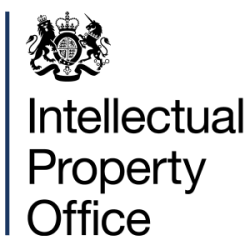Last week’s Supreme Court oral argument in the Arthrex dispute revealed some of the Justices’ dispositions towards Arthrex’s arguments.
 The Justices generally agreed with the parties that the Court’s earlier decision, Edmond v. United States, 520 U.S. 651 (1997), authored by Justice Scalia, was of controlling importance to the dispute. Several Justices appeared to question whether the “amorphous” test established by Edmond was still appropriate to determine whether a particular statutory regime for adjudicatory officers (which in this case were the Administrative Patent Judges (APJs) under the America Invents Act (AIA)) satisfied the Appointments Clause of the U.S. Constitution. Indeed, Justice Sotomayor asked the United States: “For my colleagues –and there are some who don’t like amorphous concepts or ones that don’t have a –a yardstick by which to measure –what is the advantage of us keeping the Edmond’s test?”
The Justices generally agreed with the parties that the Court’s earlier decision, Edmond v. United States, 520 U.S. 651 (1997), authored by Justice Scalia, was of controlling importance to the dispute. Several Justices appeared to question whether the “amorphous” test established by Edmond was still appropriate to determine whether a particular statutory regime for adjudicatory officers (which in this case were the Administrative Patent Judges (APJs) under the America Invents Act (AIA)) satisfied the Appointments Clause of the U.S. Constitution. Indeed, Justice Sotomayor asked the United States: “For my colleagues –and there are some who don’t like amorphous concepts or ones that don’t have a –a yardstick by which to measure –what is the advantage of us keeping the Edmond’s test?”- The government appeared to get some traction with its response that such a totality of the circumstances test was necessary because of the “multifarious” nature of the executive branch. But some Justices appeared concerned that under the Edmond case, APJs appointed under the AIA could fairly be characterized as principal officers, and therefore unconstitutional under the Appointments Clause. Justice Roberts expressed disbelief in the argument advanced by the government — that there was a meaningful level of review by the USPTO Director over APJs in individual determinations — was “fanciful.” Justices Thomas, Alito, Gorsuch, Kavanaugh, and Barrett also appeared to question the AIA regime providing the USPTO Director with supervision and control over contested matters between private parties was sufficient to characterize APJs as “inferior officers.” Rather, the tenor of their questions indicated they viewed APJs as “principal officers” and therefore their appointment unconstitutional. Indeed, Justice Kavanaugh was “worried” about the AIA regime, as it “gives a model for Congress to eliminate agency review of ALJ decisions and kind of fragment and take away from agency control going forward….”
- So it appears that the Court may split on the threshold issue of whether APJs are “principal officers” or “inferior officers,” with a majority appearing to view APJs under the AIA as principal officers.
- With that said, the argument on the remedy of how to address the Appointments Clause constitutional infirmity appeared to not favor Arthrex. Multiple Justices reminded Arthrex that the Court’s preference is to blue pencil or “blueline” a statute by severing and invalidating a portion of the statute to bring it in line with the Constitution. Several Justices appeared to accept the government’s argument that it was a sufficient remedy to sever the statutory requirement that a rehearing be before the PTAB. With that blue penciling, the USPTO Director (who is appointed and confirmed by the Senate) would have the ultimate ability to control the rehearing of decisions by APJs. Although Arthrex argued that striking this provision would render the AIA ineffectual and that the Court should defer this blue penciling to Congress, it was telling that none of the Justices appeared to embrace this argument in later questions. Also, tellingly, none of the Justices appeared to embrace the Federal Circuit’s remedy of striking the APJ employment protections in order to make APJs at will employees and therefore constitutional.
- This author believes that Arthrex may have a Pyrrhic victory on its hands. Although it may get the Court to agree that APJs are principal officers under the current AIA statutory regime, so that APJs are unconstitutional, Arthrex appeared to fail to “cross the Rubicon” in Justice Alito’s terms (although a phrase applied to a different issue), to persuade the Justices to have inter partes review of patents deemed unconstitutional. As a legal matter, and as emphasized by the government and Smith & Nephew in their briefs, if there is a constitutional infirmity, the Court prefers to use “a scalpel rather than a bulldozer in curing” any “constitutional defect.” Seila Law LLC v. CFPB, 140 S. Ct. 2183 (2020). Arthrex’s argument against the remedy of excising a statutory phrase or two that requires the PTAB to rehear its decisions rang hollow during today’s oral argument. Such a judicial fix would address the specific question before the Court and nothing more. If Congress deems the judicial fix to have some practical significance, Congress can readily address that in the near future. Indeed, one of the chief sponsors of the AIA and for whom the AIA is partly named, Senator Patrick Leahy (D-Vt.), recently regained his position as Chair of the Subcommittee on Intellectual Property of the Senate Judiciary Committee. Consequently, if a legislative response to the Court’s opinion is required, one can be promptly formulated.
More about Brad Lane, Brinks Gilson & Lione










